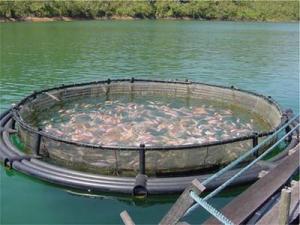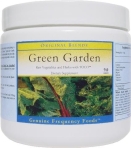Posts tagged ‘food’
Is Fish or a Can of Tuna REALLY THAT Bad for You? Your Kids?
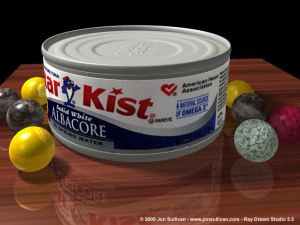
If you are a 140 lb woman eating 1 6 oz can of Albacore Tuna = you are getting 140% of the EPA limit of Mercury exposure! For a 65 lb. child eating 3 oz. = 150% of the EPA limit of ‘safe’ mercury exposure.
In other words, there is way too much mercury to consider it “SAFE” to eat in my opinion. (Which sucks because I love tuna. And so does my daughter – which was something different to give her besides the daily PB & J.)
So about 4 years ago when I got into eating ‘organic’ & ‘healthy’ foods – I quit buying tuna and most foods from the typical grocery store. I am delighted to see that a lot of stores these days at least have a small section with organic choices, although I look forward to a time when that is how most food is sold!
At first, I thought the can of Tuna on the shelf in the ‘healthy’ whole food store must be OK, Right?
It made me wonder what the difference was. So I did a little searching online.
My first great discovery – a website called GOT MERCURY? – (very cute.. ) It has a ‘Mercury Calculator‘ so you can put in your weight and the type of fish (even differentiating between albacore, yellow fin, and light tuna) to find what your mercury exposure is.

 There is even an ‘Advanced Calculator’ for people who consume more than 1 serving a week! Brace yourself – you will be shocked at how much mercury you may be consuming!
There is even an ‘Advanced Calculator’ for people who consume more than 1 serving a week! Brace yourself – you will be shocked at how much mercury you may be consuming!
Here is what I found for myself and the fish I like –
- Tilapia – 0%
- Salmon – 0%
- Scallop – 20%
- Flounder – 20%
- Crab/Shrimp – 20%
- Cod – 30%
- Light Tuna – 50%
Now the NOT so good list – (I ate occasionally and will now be avoiding!)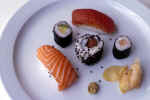
- Mahi Mahi – 60%
- Halibut – 90%
- Lobster – 110%
- Yellow fin Tuna – 120%
- Albacore Tuna – 130%
- Orange Roughy – 200%
I did find this interesting the sight about Tuna –
For some reason – I always thought Albacore was the good one to get – wow was I wrong!
Then I found in a Dr. Mercola article – that Mercury is NOT the only worry–
Other Contaminants include:
Think that Farm Raised means cleaner healthier fish? Think again!
Unfortunately, my fish consumption is rare because of this information which is a shame because it is so good!
I didn’t realize how unhealthy Tuna was so I wanted to share what I’d learned. We all hear that our oceans are contaminated but I was shocked at how badly.
Why this continues to happen? Another blog….
To Your Health!
Will the Swine Flu Get You?

I sure hope not … there are some steps you can take to help lower your risk.
A really easy one that I heard President Obama say last night on TV
WASH YOUR HANDS! And like I told my daughter, DON”T PUT YOUR HANDS IN YOUR MOUTH, NOSE, Or EYES! Easier said then done I know… you get an eyelash or something in your eye – that goes out the window unless you are very conscientious about it.
Plenty of rest, eat healthy (omit sugar), drink plenty of water, and take quality supplements like KRILL OIL (for omega 3’s), and PROBIOTICS (for the ‘good’ gut flora which is a natural anti-viral)!
Sound familiar? Same thing you hear when it is the winter ‘flu’ season.
If you’d rather not try the natural ways to avoid it and if you do end up with the Swine Flu – Plan on getting some Tamiflu?
Per Dr. Mercola’s article –
All in all, the very symptoms you”re trying to avoid.
I think I’d rather try to avoid getting it if possible.
Hoping for a vaccine in the near future? You might not ever want a flu vaccine again after you watch this!– What Ingredients are in Your Flu Shot? You’ll Be Shocked!
So all this media coverage got me thinking… Where the heck did this come from?
Supposedly, they don’t know…. but the Health Freedom Alliance has stated –
“It appears this strain was created in a lab and “escaped.” Take necessary action now to boost your immune system.
Wondering more about this “escape” – I found more about this in Mercola’s special report –
Wow, what a mess…
I’ll be ordering extra Vitamin C, Probiotics, and drinking a lot of water after washing my hands and not touching my face!
My best to you!
Money Is Tight so What Fruits & Veggies Should I Buy Organic & Which Can I Buy Conventionally Grown?

In today’s economy you may be feeling the pinch. Even if you aren’t, you may be more aware of how much you are spending. Either that is what is happening to me, or food prices just continue to climb! Probably both.
But I am a believer in eating organically. It is a fact that organically grown food has a higher vitamin/mineral content than conventionally grown produce.
Besides that I prefer to eat my fruits & veggies without all the pesticides and insecticides that conventionally grown produce offers you. If you want to know why it is better to NOT consume these dangerous chemicals – that is a whole other blog!
So what to do when my shopping list is bigger than my budget and I’m out of coupons? Buy some stuff that isn’t organic. It doesn’t thrill me but sometimes you gotta do what you gotta do.
What then is the ‘must have’ organic produce? Which are OK to buy non-organic?
Announcing a new update to an old favorite: it’s the 5th edition of EWG’s classic Shopper’s Guide to Pesticides, now with the latest government data. This handy guide shows you the fruits and veggies with the most and least pesticides, so you know which to always buy organic and which are pretty clean even when conventionally grown.
The Full List: 47 Fruits & Veggies
| RANK | FRUIT OR VEGGIE | SCORE |
| 1 (worst) | Peach | 100 (highest pesticide load) |
| 2 | Apple | 93 |
| 3 | Sweet Bell Pepper | 83 |
| 4 | Celery | 82 |
| 5 | Nectarine | 81 |
| 6 | Strawberries | 80 |
| 7 | Cherries | 73 |
| 8 | Kale | 69 |
| 9 | Lettuce | 67 |
| 10 | Grapes – Imported | 66 |
| 11 | Carrot | 63 |
| 12 | Pear | 63 |
| 13 | Collard Greens | 60 |
| 14 | Spinach | 58 |
| 15 | Potato | 56 |
| 16 | Green Beans | 53 |
| 17 | Summer Squash | 53 |
| 18 | Pepper | 51 |
| 19 | Cucumber | 50 |
| 20 | Raspberries | 46 |
| 21 | Grapes – Domestic | 44 |
| 22 | Plum | 44 |
| 23 | Orange | 44 |
| 24 | Cauliflower | 39 |
| 25 | Tangerine | 37 |
| 26 | Mushrooms | 36 |
| 27 | Banana | 34 |
| 28 | Winter Squash | 34 |
| 29 | Cantaloupe | 33 |
| 30 | Cranberries | 33 |
| 31 | Honeydew Melon | 30 |
| 32 | Grapefruit | 29 |
| 33 | Sweet Potato | 29 |
| 34 | Tomato | 29 |
| 35 | Broccoli | 28 |
| 36 | Watermelon | 26 |
| 37 | Papaya | 20 |
| 38 | Eggplant | 20 |
| 39 | Cabbage | 17 |
| 40 | Kiwi | 13 |
| 41 | Sweet Peas – Frozen | 10 |
| 42 | Asparagus | 10 |
| 43 | Mango | 9 |
| 44 | Pineapple | 7 |
| 45 | Sweet Corn – Frozen | 2 |
| 46 | Avocado | 1 |
| 47 (best) | Onion | 1 (lowest pesticide load) |
Note: We ranked a total of 47 different fruits and vegetables but grapes are listed twice because we looked at both domestic and imported samples.
GET THE GUIDE
Find out what changed about bananas, carrots, and spinach (among others), and get a printable version of the wallet-sized guide.
Hope this helps you in making decisions when shopping!
To Your Health!

Could Taking A ‘GREENS SUPPLEMENT’ Help You?
Why?
Because Western diets that are typically high in meat [protein] and carbohydrate consumption are highly acidic [because acid is needed to break down proteins and carbohydrates]. Greens food are plant based so they help keep the body’s sensitive pH balance in an alkaline and healthy state.
Unless most of your diet consists of vegetables and fruits with an emphasis on eating them raw – you are probably lacking some of the nutrients your body wants!
With our hectic lives, it’s never easy to squeeze in all of those servings of fruits and vegetables, but getting balanced whole food nutrition is vital for optimal health!
Diets high in fruits and vegetables have been shown to reduce the risk of obesity and some chronic health diseases such as cardiovascular disease, cancer, and diabetes. Are you missing out on the health benefits of a nutritionally-rich diet?
It’s easy to increase your daily consumption of nutritious whole foods with our amazing Green Garden formula.
If you are looking for a raw vegetable blend to super-charge your diet look no further!
One of the best parts about Frequency Foods Green Garden Formula is that it comes in both powder & capsules!
There are quite a few Greens on the market – yet it is hard to find them in Capsule form for those who prefer it – especially kids!
Another reason you should choose Green Garden from Frequency Foods….
Green Garden contains NO fillers, flowing agents (many manufacturers use talcum powder…ugh!), and absolutely no synthetic additives or preservatives. All the raw materials used in Green Garden are analyzed for purity and vitality before AND AFTER manufacturing. The product quality is unsurpassed!
Why Not Give it a try – see how you feel!
To Your Health!
Is the High Fructose Corn Syrup Ad Right – Is it Harmless?

A few friends had mentioned seeing a commercial stating that High Fructose Corn Syrup was natural and harmless. I finally saw it myself this weekend. Wow, what I was most amazed about was the lack of information that was given. I guess when you are trying to promote a unhealthy product, less is more.
If you haven’t seen it – a man and woman are picnicking and the woman is holding a red Popsicle. She offers it to him and he declines because it has high fructose corn syrup in it. When she asks him Why that is a ‘bad’ thing, he is unable to respond. This is the crux of the commercial, he can’t verbalize WHY it has a negative effect on his health. Because of this, she tells him that it is made from corn and it is natural. Then finishing with something about it being OK in moderation.
The sad fact is unless you have a PhD in natural health and /or nutrition, it is hard to articulate what you’ve read and believe. I know… I still have trouble sometimes and it has been my main reading/hobby/interest/career for the last 5 years!
Having a massive interest in ‘natural’ food and ‘alternative’ health, spawned by my daughter’s miraculous recovery from JRA (Juvenile Rheumatoid Arthritis) using these methods, I’ve removed High Fructose Corn Syrup from my family’s diet. 
I’m not surprised that this commercial is out… I mean the organic food movement is getting larger. When I began eating all organic food years ago, there was not an organic piece of produce or anything in the ‘regular’ grocery store. Now most stores at last have some sections designated for organic products. Most of these labels state NO HIGH FRUCTOSE CORN SYRUP, which is one of the ingredients informed consumers look to avoid. The corn syrup producers must be very unhappy about this and are trying to fight their demise.
After watching the commercial I thought about what I would have said when asked WHY is HFCS bad?
Well, what I know is that High Fructose Corn Syrup is unhealthy because it is a sweetener which raises insulin levels, which has negative effects on the body. Just like it is a well known fact today that sugar does this and it is best to minimize or omit it from your diet.
So what makes HIGH FRUCTOSE CORN SYRUP so bad? You can read many different articles that give you the scientific breakdown of what HFCS is and why is is unhealthy. To read specifics, check out – What is High Fructose Corn Syrup or Six Reasons Why Corn is Making You Fat by Joseph Mercola.
But the overall picture is this. High Fructose Corn Syrup was created by Japanese Scientists in the 70’s. (which back before this obesity rates were very low, coincidence?)
HFCS is now the prevalent sweetener used in the US for many reasons, but mostly money. It is cheaper. (surprise surprise)
It isn’t natural because it is modified. High Fructose Corn Syrup is made by adding enzymes to cornstarch to change the make up.
I could go on and on, but why? You’ll forget and it really isn’t important. Why? Because it is just as bad for you as sugar and is more prevalent in the American diet than sugar. And no one is arguing that we need to cut back on sugar.
I mean every knows and doesn’t fight the fact that: 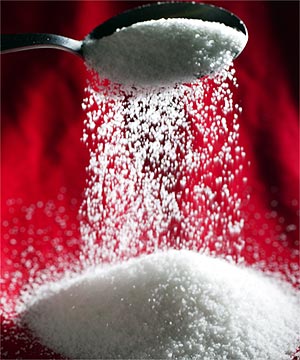
Here is a list of ways sugar can affect your health:
- Sugar can suppress the immune system.
- Sugar can upset the body’s mineral balance.
- Sugar can contribute to hyperactivity, anxiety, depression, concentration difficulties, and crankiness in children.
- Sugar can produce a significant rise in triglycerides.
- Sugar can cause drowsiness and decreased activity in children.
- Sugar can reduce helpful high density cholesterol (HDLs).
- Sugar can promote an elevation of harmful cholesterol (LDLs).
- Sugar can cause hypoglycemia.
- Sugar contributes to a weakened defense against bacterial infection.
- Sugar can cause kidney damage.
- Sugar can increase the risk of coronary heart disease.
- Sugar may lead to chromium deficiency.
- Sugar can cause copper deficiency.
- Sugar interferes with absorption of calcium and magnesium.
- Sugar can increase fasting levels of blood glucose.
- Sugar can promote tooth decay.
- Sugar can produce an acidic stomach.
- Sugar can raise adrenaline levels in children.
- Sugar can lead to periodontal disease.
- Sugar can speed the aging process, causing wrinkles and grey hair.
- Sugar can increase total cholesterol.
- Sugar can contribute to weight gain and obesity.
- High intake of sugar increases the risk of Crohn’s disease and ulcerative colitis.
- Sugar can contribute to diabetes.
- Sugar can contribute to osteoporosis.
- Sugar can cause a decrease in insulin sensitivity.
- Sugar can cause cardiovascular disease.
- Sugar can increase systolic blood pressure.
- Sugar causes food allergies.
- Sugar can cause free radical formation in the bloodstream.
- Sugar can cause toxemia during pregnancy.
- Sugar can contribute to eczema in children.
- Sugar can overstress the pancreas, causing damage.
- Sugar can cause liver cells to divide, increasing the size of the liver.
- Sugar can increase the amount of fat in the liver.
- Sugar can cause depression.
- Sugar can cause hormonal imbalance.
- Sugar can cause hypertension.
- Sugar can cause headaches, including migraines.
- Sugar can cause an increase in delta, alpha and theta brain waves, which can alter the mind’s ability to think clearly.
- Sugar can increase blood platelet adhesiveness which increases risk of blood clots and strokes.
- Sugar can increase insulin responses in those consuming high-sugar diets compared to low sugar diets.
- Sugar increases bacterial fermentation in the colon.
So it seems kind of silly that this is the Pro’s list for High Fructose Corn Syrup –
The Pro-High Fructose Corn Syrup people, namely those involved in its sale, and hhmm money, say that –
- The American Medical Association (AMA) recently concluded that “high fructose corn syrup does not appear to contribute to obesity more than other caloric sweeteners.” (Well, great they all contribute so it is not worse than sugar, that is saying something)
- Research confirms that high fructose corn syrup is safe and nutritionally the same as table sugar. (Wow, it is as nutritional as sugar, great! We just read all of the great benefits of eating sugar)
- High fructose corn syrup offers numerous benefits. It keeps food fresh, enhances fruit and spice flavors, retains moisture in bran cereals, helps keep breakfast and energy bars moist, maintains consistent flavors in beverages and keeps ingredients evenly dispersed in condiments (these are all so important to the consumer, lets have moist stuff that lasts a long time so we can be fat and sick)
Pretty silly argument huh?
My last point – if you are serious about omitting the High Fructose Corn Syrup – become a label reader. Yes, it is a pain in the ass – but your body will thank you by feeling better. You will be amazed that all it is in. Some examples –
bread, cereal, candy, beverages, condiments, jelly, salad dressing, sauces, snacks, soups.
Hope this helped clear some of it up for you!
To Your Health,
Don’t Give Up Your Chocolate! Try this Healthy Version…
Dark Chocolate Goji Berries!
I found these in my local co-op from a company called Extreme Health USA.
A couple of days a week I get an urge for chocolate. So instead of giving it up, I’ve changed what kind of chocolate I’ll eat.
For the most part, I will only eat organic dark chocolate because of the increased antioxidant properties with less of the unhealthy part – namely sugar. These use organic evaporated cane juice instead of the refined white sugar found in most chocolate.
I love these bite size chocolate covered berries because of their taste – but check out the health benefits:
|
COMPARE
Antioxidant Levels |
|
|
FOOD
|
ORAC Units*
|
|
Goji Berry
|
25,100
|
|
Prunes
|
5,700
|
|
Raisins
|
2,830
|
|
Spinach
|
1,260
|
|
Brussel Sprouts
|
980
|
|
Broccoli
|
890
|
|
Oranges
|
750
|
|
Cherries
|
670
|
|
* ORAC units (Oxygen Radical Absorbance Capacity Scale) is a measure of the ability of antioxidants to absorb oxygen “free radicals”; 3000 units is considered an industry standard for health.
Extreme Health’s Goji Berry is 25,100 units. |
|
So if you get that chocolate craving- give these a try! They also come in other flavors like Cappuccino, milk chocolate, and pomegranate yogurt.
To Your Health!
Are You Going to Be a Scientific Experiment by Eating Cloned Food?
That seems to be what the US government is doing by cloning animals.
What is this?
I’d love to know who performed these studies and who paid for them.
Even worse –
I mean how is it that they can put cloned food in our food supply without any labels?
Silly question – I know – what drives most of the insanity in this day and age – money.
More money for the powers that be from the cloning companies who want money from the farmers for these prized animals, who (the farmers) want more money for their scientific experiments.
What price do we and our children pay for this?
I suppose we are suppose to just wait some years and find out? That is what the FDA would like us to do.
Aside from the inhumane treatment to animals (which is a whole other subject) Shouldn’t the mere fact that most cloning attempts fail and if they do work, there are severe health problems enough to tell us that it isn’t right?
I think so and anyone I’ve ever talked to is at least uncomfortable with the idea and they want to know more.
Thank Goodness for the people like The Center For Food Safety who keep us informed of what is trying to be put through without our knowledge. Also because of great people like them – they allow our voices to be heard.
In one of their latest articles they said-
I for one do not want to eat or drink any cloned or genetically modified foods. It is already a shame that most of what fills a typical grocery store shelf is boxes of chemicals.
If this has hit a chord with you go here and sign the petition that our stores will see telling them that we don’t want cloned food!
If enough people do this – we can make a difference for ourselves and our children.
It is worth the try. And thank you to the True Food Network!
To Your Health,
Milk … Why Your Kids Don’t Want to Drink it. Are They On to Something?
My daughter would NOT drink milk from about 4 years old until last year at 11.
Did her taste buds change – No, not really.
Before getting into learning about health – I tried to give her regular, pasteurized skim milk. It is said to be healthy for her, but she would not drink it (except to put on her cereal and throw what was left away after eating).
It didn’t really make sense to me since she was not a finicky eater and she ate just about any vegetable I put in front of her and she loved fruit. So why wouldn’t she drink this healthy drink? What was the problem?
Maybe (as most kids do) she instinctively knew what her body needed. What I found after researching milk was that pasteurized, homogenized milk is NOT ‘healthy’ as advertised. Even though some of the stars look kind of cute with the white mustache and the slogan “GOT MILK?”
So what changed at 11 years old that she began drinking it?
I gave her raw milk. One sip, then she finished the glass, then she asked for more!
Where did I get it? At – Sunset View Pastures Farm, an Amish farm in Cochranville, PA. They are located at –
Steve and Katie Stoltzfus
751 Saw Mill Road
Cochranville, PA 19330
610-299-6726
Not only do they have the most amazingly delicious dairy, eggs, and beef products, they are wonderfully friendly and knowledgeable.
How did I find them? Online on www.LocalAmishFarms.com
It is a site dedicated to farms, and farmer markets in the Southeastern Pennsylvania area that offer locally raised, organic and pesticide-free produce, dairy, meats.
I know, if this is new to you, you might be thinking that can’t be safe, or that has to be fattening, if it was so much better for you, than why is there only pasteurized, homogenized milk in the grocery store?
I know, I wondered that as well.
Safety – There are many sites out there that talk about the differences between raw and pasteurized milk. The main consensus is this – raw milk from organic grass fed cows in a cleanly facility is better than pasteurized milk.
Why? Because pasteurized milk is heated which kills all bacteria (the good and bad) leaving it without the digestive enzymes, and nutrients that are the ‘good’ for you part. Here is a blurb from a Dr. Mercola newsletter on raw milk –
The big determining factor about the safety of milk is what the cows are fed and the facility it is produced at. I found this youtube video at another great informative site – www.raw-milk-facts.com.
As nature does in making things with a purpose, raw milk fat actually has multiple purposes – like assisting with the absorption of calcium, and in Dr. Mercola’s newsletter he says that it also assists in the development of muscle and supporting the thyroid.
Check out all three of these sites to learn more about the benefits of raw milk! It really is eye opening … then you can make your assumption on why most groccery stores only offer pasturized milk.
I will continue to drive to the Sunset View Pasture’s Farm to get my milk, eggs, and more.
I can now say that my daughter loves her milk!
Is Your Child Chewing Their Way to Disease? The Hidden Health Dangers of Gum!
My daughter loves gum! She would chew it constantly if I let her. Some of you and many people I know are probably rolling your eyes already and saying ‘What’s wrong with her having a little piece of gum!’
Considering I spend a lot of money on organic food and supplements, I wondered what the impact was of all the gum she was chewing.
It couldn’t be that bad right? I mean on Wrigley’s website they say this in their last paragraph…
Well, I liked the word ‘wholesome’ – sounds good right? So I looked at the brand she chewed the most the bubble gum – here are the ingredients they list on their site.
| Brand | Ingredients | Nutrition Information | ||||||||||||||||||||||||||||||||||||||||||||||||||||||||||||||||||||||||||||||||||||||||||||||||||||||
 Extra Classic Bubble Gum Sugarfree |
Sorbitol, gum base, glycerol, mannitol, natural and artificial flavors, softeners, maltitol, aspartame, acesulfame K, Red 40 Lake, BHT (to maintain freshness) sucralose, Yellow 6
Phenylketonurics: contains phenylalanine |
FOR EXTRA CLASSIC BUBBLE GUM ONLY
|
||||||||||||||||||||||||||||||||||||||||||||||||||||||||||||||||||||||||||||||||||||||||||||||||||||||
So what are some of those chemicals?
*Acesulfame K
this is a common sugar substitute
Found in: pudding, chewing gum, non-dairy creamers, instant coffee mixes, tea mixes and gelatin desserts. In studies done with animals, Acesulfame K apparently produced lung tumors, breast tumors, and several forms of leukemia and chronic respiratory disease.
*Aspartame
Found in sugar substitutes and sweeteners in foods and some body products, such as shaving gel and diet sodas.
People who were affected by this chemical, often report dizziness, headaches and even seizures. Long term effects are still unknown.
*BHA – BHT
Found in canned foods and body products.
This substance is actually banned in other countries because these two preservatives are considered carcinogenic, but they still remain in U.S. manufactured foods that contain oil as they retard rancidity
to read about more such chemicals click here
So…. those ingredients don’t sound so wholesome to me!
What did this doctor have to say about gum chewing?
Why Chewing Gum Is Bad For Your Health
By Dr. Ben Kim on October 10, 2004
If you chew gum on a regular basis, please consider the following:
- Chewing gum causes unnecessary wear and tear of the cartilage that acts as a shock absorber in your jaw joints. Once damaged, this area can create pain and discomfort for a lifetime.
- You use eight different facial muscles to chew. Unnecessary chewing can create chronic tightness in two of these muscles, located close to your temples. This can put pressure on the nerves that supply this area of your head, contributing to chronic, intermittent headaches.
- You have six salivary glands located throughout your mouth that are stimulated to produce and release saliva whenever you chew. Producing a steady stream of saliva for chewing gum is a waste of energy and resources that could otherwise be used for essential metabolic activities.
- Most chewing gum is sweetened with aspartame. Short and long term use of aspartame has been closely linked with cancer, diabetes, neurological disorders, and birth defects.
- If your gum isn’t sweetened by aspartame, it is probably sweetened by sugar. Sugar is most likely the single greatest dietary cause of chronic health problems like cancer, heart disease, diabetes, and emotional disorders.
The next time you think about chewing gum, please remember the price that your body pays for it.
Well – I suppose all of the companies selling this gum say the ingredients are not harmful – there has to be research that says so.
Then I saw this…
Analysis Shows Nearly 100% of Independent Research Finds
Problems With Aspartame
An analysis of peer reviewed medical literature using MEDLINE and other databases was conducted by Ralph G. Walton, MD, Chairman, The Center for Behavioral Medicine, Professor of Clinical Psychiatry, Northeastern Ohio Universities College of Medicine. Dr. Walton analyzed 164 studies which were felt to have relevance to human safety questions. Of those studies, 74 studies had aspartame industry-related sponsorship and 90 were funded without any industry money.
No conflict of interest there huh?
Now I knew I wouldn’t be buying anymore regular gum. I had to find a substitute –
So, the healthiest chewing gum i could find is Spry at my local health food store. It has less ingredients and there are no chemicals listed above. It is sweetened with Xylitol which is natural as well.
What is Xylitol?
One little piece of gum doesn’t seem like a big deal – but a few a day, packs a week, cases a year – that adds up to too much to ignore!
To Your Health!
GreenLifeSaver.net
Looking for an All-in-One Vitamin-Mineral-Enzyme Blend?
Do you know you need to supplement with a multi-vitamin but you’re confused about which one to take? Don’t waste your money on inferior products! www.GreenLifeSaver.net is happy to offer you a high-quality, bioavailable, multi that takes the guesswork out of it!
Frequency Foods is proud to announce a fantastic new addition to our product line: VME Complete!
Every once in a while a product comes along that promises to change lives forever. VME Complete is that type of product. Over the past year, Frequency Foods has sought out to add to our product line a truly effective, powerful, and perfectly balanced “all-in-one” supplement that would not only complement the other products in the line but also stand alone for those who want the ease and simplicity of one supplement regime.
The name says it all – VME Complete (abbreviation for Vitamin – Mineral – Enzyme). A complete formula containing an extensive vitamin complex including Vitamins A, C, D, E and K plus a FULL B-Vitamin complex for energy, anti-aging, and extra vitality throughout the day. The added powerful enzyme complex allows for continual digestion of the vitamin-mineral matrix that results in far higher bio-availability of its ingredients.
CLICK HERE to learn more about VME Complete and a detailed list of the ingredients in each capsule!
Get $5.00 off the first bottle! Enter TryVME in the coupon code when checking out and instantly save $5.00!
To Your Health!
